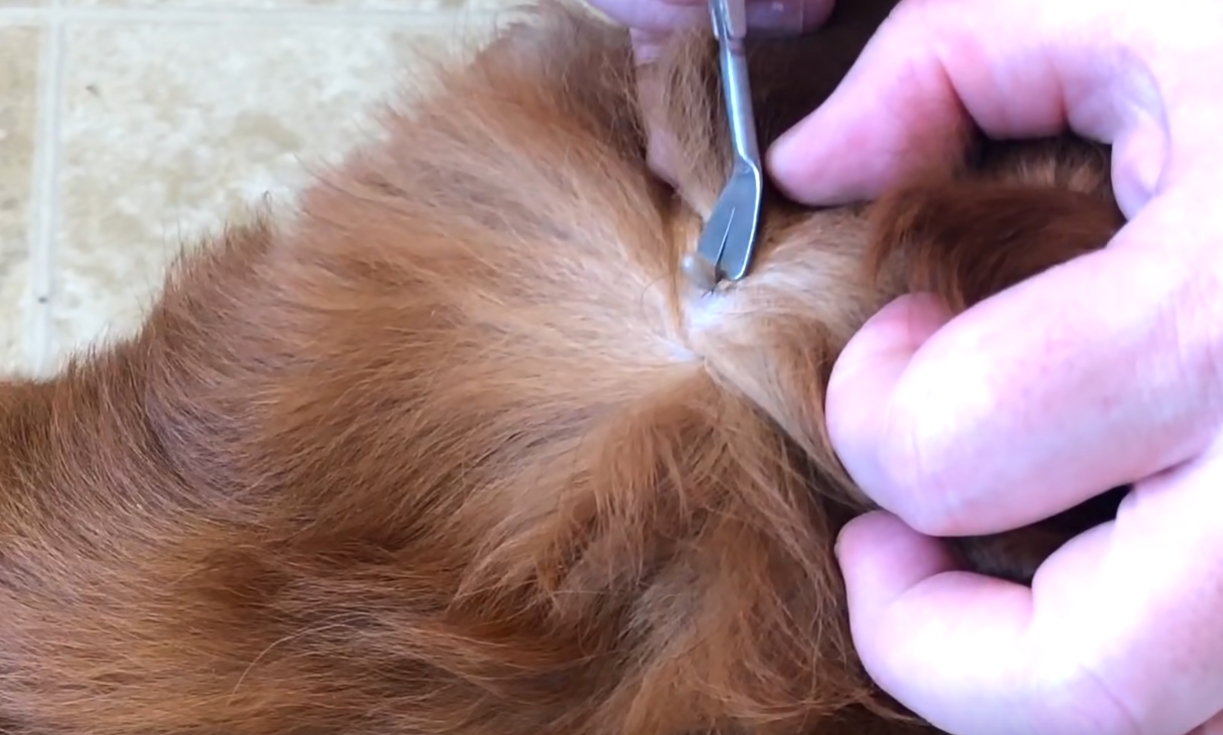Ticks are notorious pests that can be a real nuisance, especially for those who love spending time outdoors. The big question that everyone wants to know is: how long will a tick stay attached? Well, the answer is that it depends on the type of tick, the stage of its life cycle, and the host it feeds on.
In my experience, one of the most effective solutions for preventing tick bites is the use of tick repellent. I’ve tried a variety of different products, including sprays, lotions, and clothing treatments, and I’ve found that they can be very effective in deterring ticks. The key is to choose a product that contains an active ingredient like DEET or permethrin, which has been shown to be highly effective against ticks.
Another approach that I’ve found to be useful is tick control in the environment. This can involve everything from keeping your lawn trimmed and free of debris to treating your property with pesticides. There are also some natural solutions, such as using nematodes, which are tiny worms that feed on ticks, or planting tick-repellent plants like lavender or rosemary.
Finally, it’s important to know how to remove a tick safely and effectively if you do get bitten. The best way is to use fine-tipped tweezers to grasp the tick as close to the skin as possible and pull it straight out with a steady, gentle motion. Be sure to clean the area with soap and water, and keep an eye out for any signs of infection or illness.
Overall, while ticks can be a real nuisance, there are plenty of effective solutions out there for preventing and treating tick bites. By taking the right precautions and being aware of the risks, you can enjoy the great outdoors without worrying about these pesky parasites.
There are several active ingredients that are commonly used in tick repellents, each with its own unique properties and benefits.
Here is a closer look at some of the most popular active ingredients, including their effectiveness, safety, and other considerations:
| Active Ingredient | Effectiveness | Safety | Duration of Protection | Other Considerations |
|---|---|---|---|---|
| DEET | Highly effective against ticks, mosquitoes, and other insects | Safe when used as directed, but can cause skin irritation in some people | 4-8 hours | May damage plastics or synthetic fabrics |
| Picaridin | Effective against ticks, mosquitoes, and other insects | Considered safe when used as directed, but may cause skin irritation in some people | 6-8 hours | Has a non-greasy feel and doesn’t damage clothing or gear |
| Permethrin | Highly effective against ticks and other insects, but not designed for direct skin application | Considered safe when used as directed, but can be toxic to cats when wet | Up to 6 weeks or 6 washings | Can be applied to clothing, shoes, and gear for long-lasting protection |
| Citronella | Mildly effective against mosquitoes, but not very effective against ticks | Generally considered safe, but may cause skin irritation in some people | 1-2 hours | Has a pleasant scent, but needs to be reapplied frequently |
| Essential oils | Vary in effectiveness depending on the oil, but generally not as effective as other active ingredients | Generally considered safe, but can cause skin irritation in some people | 1-2 hours | May have a pleasant scent and be more appealing to those who prefer natural products |
As you can see, each active ingredient has its own unique benefits and drawbacks, and the best option for you will depend on your individual needs and preferences. For example, if you are looking for long-lasting protection, permethrin-treated clothing may be the best choice, while if you prefer natural products, essential oils may be a good option. It’s also worth noting that combining multiple active ingredients, such as using a product that contains both DEET and permethrin, may provide even greater protection against ticks and other insects. Ultimately, the key is to choose a product that is safe and effective for your needs and to follow the label instructions carefully for optimal results.
When it comes to dealing with ticks and tick bites, having the right equipment on hand can make all the difference.
Here are some of the key tools and supplies that you may want to consider adding to your tick-fighting arsenal:
| Equipment | Description | Use |
|---|---|---|
| Fine-tipped tweezers | Small, pointed tweezers with a fine tip for grasping ticks | Used to remove ticks from skin safely and effectively |
| Tick removal tool | A specialized tool designed to remove ticks without squeezing or twisting | Can be easier to use than tweezers for some people |
| Tick repellent | A spray, lotion, or other product designed to repel ticks | Used to prevent tick bites and reduce the risk of tick-borne diseases |
| Permethrin-treated clothing | Clothing that has been treated with permethrin, an insecticide that repels ticks and other insects | Provides long-lasting protection against ticks and other insects |
| Nitrile gloves | Disposable gloves made of nitrile that protect hands from tick bites and tick-borne diseases | Used when handling ticks or working in tick-infested areas |
| Antiseptic wipes | Pre-moistened wipes that contain an antiseptic to clean the skin after tick removal | Used to reduce the risk of infection after a tick bite |
| Tick ID card | A small card or guide that helps identify different types of ticks and the diseases they can carry | Useful for identifying ticks and assessing the risk of tick-borne diseases |
By having these tools and supplies on hand, you’ll be better equipped to deal with ticks and tick bites safely and effectively. Whether you’re spending time in the great outdoors or just want to be prepared for the unexpected, having the right equipment can give you peace of mind and help you avoid the risks associated with ticks and tick-borne diseases.
How to Prevent and Treat Tick Bites
While the length of time a tick will stay attached to its host can vary depending on a number of factors, there are some general guidelines you can follow to minimize the risk of tick bites and tick-borne diseases.
Here is a step-by-step guide on how to prevent and treat tick bites:
- Wear protective clothing: When spending time in tick-infested areas, wear long-sleeved shirts, long pants, and closed-toe shoes. Tuck your pants into your socks or boots to create a barrier between your skin and any ticks that may be present.
- Use tick repellent: Apply a tick repellent containing DEET, picaridin, or permethrin to exposed skin and clothing. Follow the label instructions carefully and reapply as directed.
- Check for ticks: After spending time in tick-infested areas, check your body carefully for ticks. Be sure to check the scalp, armpits, groin, and other areas where ticks are likely to hide.
- Remove ticks safely: If you find a tick attached to your skin, use fine-tipped tweezers to grasp the tick as close to the skin as possible and pull it straight out with a steady, gentle motion. Do not twist or jerk the tick, as this can cause the mouthparts to break off and remain in the skin.
- Clean the area: After removing the tick, clean the bite area with soap and water or an antiseptic wipe.
- Monitor for symptoms: Watch for any signs of a tick-borne illness, such as a rash, fever, headache, or fatigue. If you experience any of these symptoms, seek medical attention right away.
By following these steps, you can reduce your risk of tick bites and tick-borne diseases, and enjoy the great outdoors with greater peace of mind. If you do get bitten by a tick, be sure to monitor the bite area carefully and seek medical attention if you experience any symptoms of illness.
FAQ
Q: How long can a tick stay attached to a host?
A: The length of time a tick will stay attached can vary depending on the type of tick, the stage of its life cycle, and the host it feeds on. In general, ticks can stay attached for several hours to several days before dropping off.
Q: Can ticks transmit diseases immediately upon biting?
A: No, ticks typically need to be attached for several hours before they can transmit diseases. However, it’s important to remove ticks as soon as possible to reduce the risk of infection.
Q: What should I do if I find a tick attached to my skin?
A: Use fine-tipped tweezers to grasp the tick as close to the skin as possible and pull it straight out with a steady, gentle motion. Do not twist or jerk the tick, as this can cause the mouthparts to break off and remain in the skin. Clean the bite area with soap and water or an antiseptic wipe, and monitor the area for any signs of infection or illness.
Q: What are some of the diseases that ticks can transmit?
A: Ticks can transmit a variety of diseases, including Lyme disease, Rocky Mountain spotted fever, Ehrlichiosis, and Babesiosis, among others. These diseases can cause a range of symptoms, from mild to severe, and can be difficult to diagnose and treat.
Q: How can I prevent tick bites?
A: Wear protective clothing when spending time in tick-infested areas, use a tick repellent containing DEET, picaridin, or permethrin, and check your body carefully for ticks after spending time outdoors. Be sure to remove ticks as soon as possible and seek medical attention if you experience any symptoms of illness.

